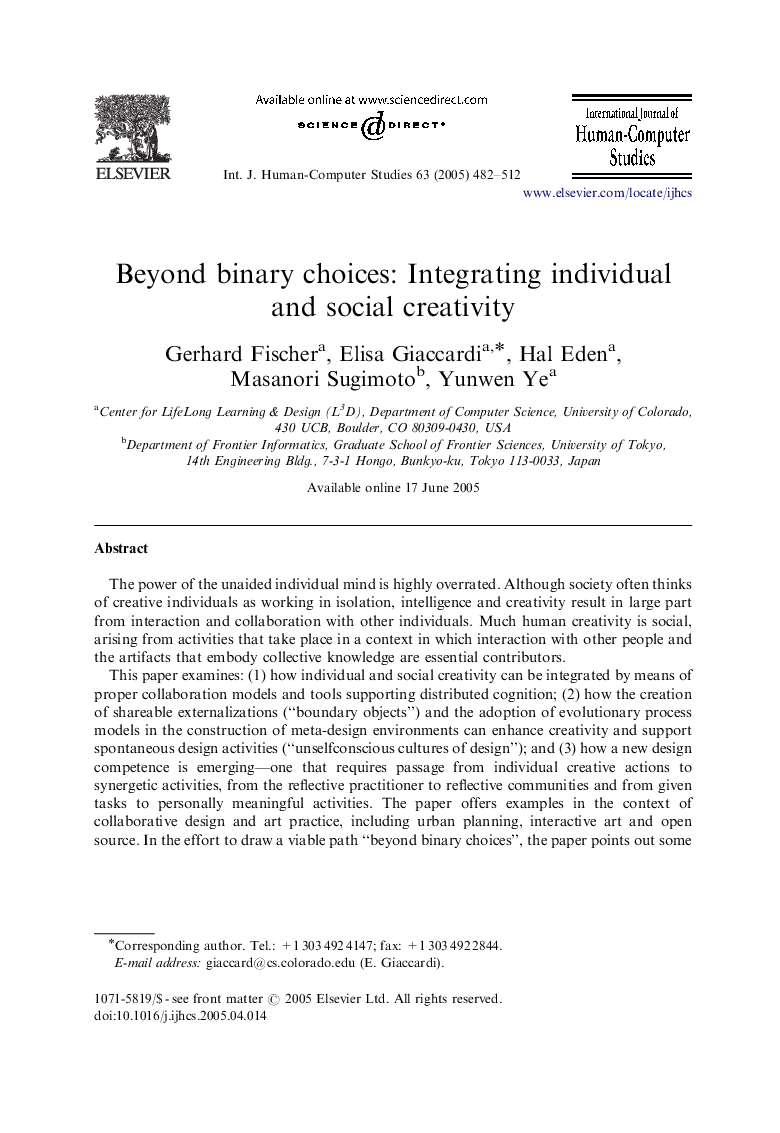| Article ID | Journal | Published Year | Pages | File Type |
|---|---|---|---|---|
| 9652476 | International Journal of Human-Computer Studies | 2005 | 31 Pages |
Abstract
This paper examines: (1) how individual and social creativity can be integrated by means of proper collaboration models and tools supporting distributed cognition; (2) how the creation of shareable externalizations (“boundary objects”) and the adoption of evolutionary process models in the construction of meta-design environments can enhance creativity and support spontaneous design activities (“unselfconscious cultures of design”); and (3) how a new design competence is emerging-one that requires passage from individual creative actions to synergetic activities, from the reflective practitioner to reflective communities and from given tasks to personally meaningful activities. The paper offers examples in the context of collaborative design and art practice, including urban planning, interactive art and open source. In the effort to draw a viable path “beyond binary choices”, the paper points out some major challenges for the next generation of socio-technical environments to further increase the integration of individual and social creativity.
Keywords
Related Topics
Physical Sciences and Engineering
Computer Science
Artificial Intelligence
Authors
Gerhard Fischer, Elisa Giaccardi, Hal Eden, Masanori Sugimoto, Yunwen Ye,
